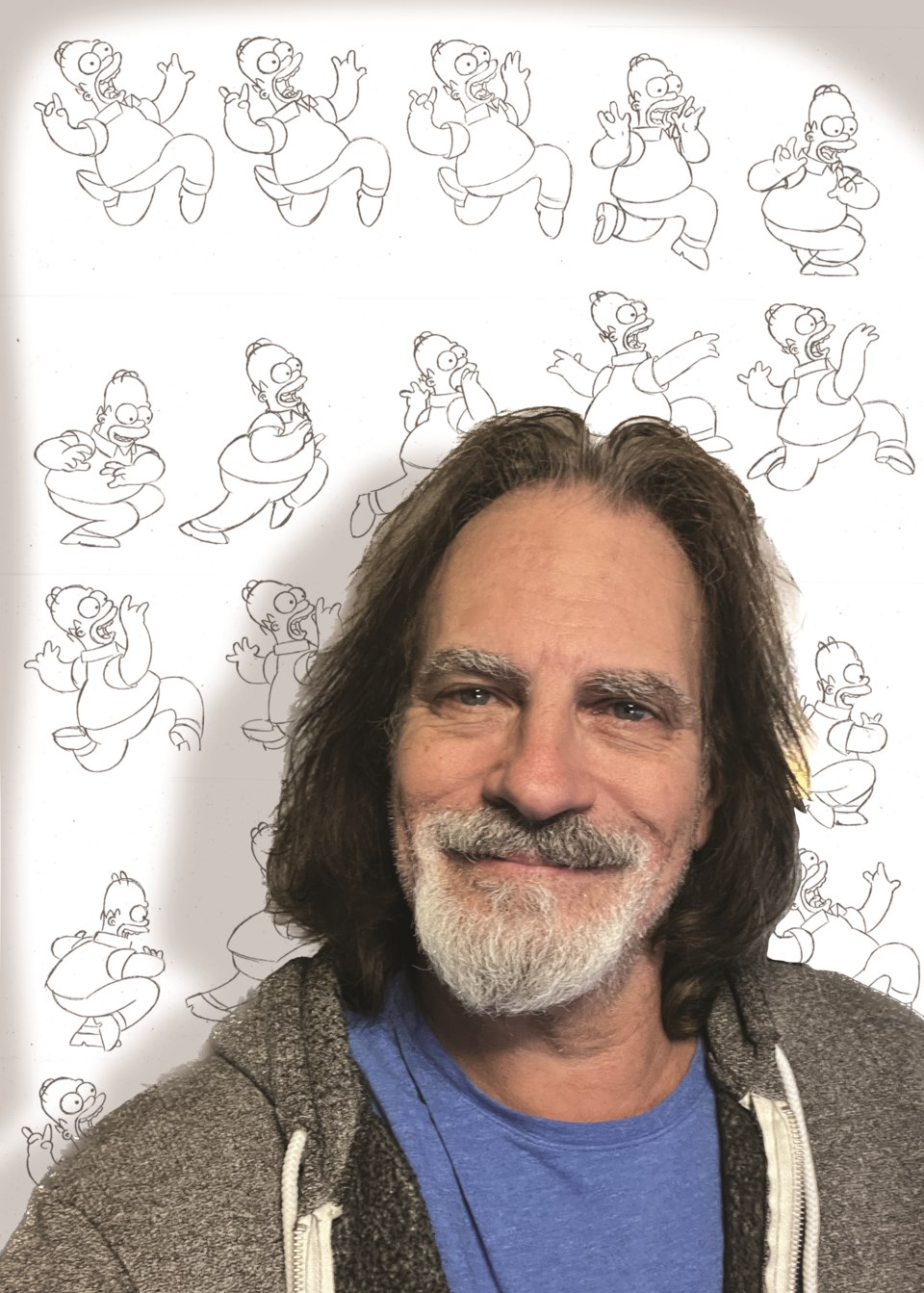The first hint of the cultural juggernaut The Simpsons would eventually become came early for animator, producer and director, David Silverman.
The Maryland native was back home for the holidays in December 1989, just days after the series premiered with its Christmas special, “,” the first of 73 episodes—and counting—he would direct, and long before Bart and his dysfunctional family became a fixture of the American zeitgeist. Sporting a crew jacket emblazoned with his name on the front and the show logo based off one of his drawings on the back, Silverman kept getting hounded by fans asking him where they could pick one up for themselves.
“There’s no merchandising of The Simpsons at this point. There weren’t all these T-shirts or anything—there was nothing,” recalls Silverman, who was in the resort last week for the Whistler Film Festival. “I thought to myself, ‘What is going on here?’ I’m just walking around with this one jacket and I’m getting a lot more attention than I normally would.
“That’s when I realized we were onto something.”
Not that Silverman had much time to enjoy the fruits of his labour. Especially in those early days, he and the rest of the animation team barely had a spare moment to sleep, let alone take notice of the cultural phenomenon they had created. And, outside of show creator and executive producer Matt Groening, there’s a strong argument to be made that nobody has had more direct influence on the show than Silverman himself, who has directed a significant number of the show’s most iconic episodes, and is largely credited with creating most of the rules for drawing The Simpsons, having been involved since The Tracey Ullman Show days.
“On The Tracey Ullman Show, it was primarily myself and Wes Archer doing the animation and we literally didn’t have the time to make model sheets. We’re looking over each other’s shoulder and just drawing it,” Silverman explains. “It was sort of reverse engineered, trying to analyze how to construct these characters for people who don’t know how to draw them yet or animators who are not familiar with them. Because they weren’t traditional Disney-style characters, or traditional Hanna-Barbera-style characters. They were Matt Groening-style characters as interpreted by Wes Archer and me.”
It begs a question Silverman has heard before: why yellow?
“Oh, well, I can answer that very simply. I have always thought that, basically, Bart, Lisa and Maggie do not have a hairline … Flesh colour wouldn’t work because what happens with the hair? I can’t do a slow fade and I don’t want to add a hairline because that would destroy the graphic integrity. So yellow worked as a hair and skin colour,” he says. “And Matt [Groening] liked it because he thought as people were flipping through channels and … these yellow characters showed up, they’d be like, ‘Hey, this is weird. I’m gonna watch this.’”
Thirty-four seasons in, The Simpsons’ longevity is unparalleled (“It’s an ongoing mystery to us,” Silverman quips). But, of course, after three-and-a-half decades, Silverman is no stranger to the common refrain often heard from Simpsons nostalgists: that the more recent output can’t shake a sprinkled doughnut at the show’s golden years (generally considered to be Seasons 3 through 8, give or take a season or two).
“Eventually things have to change. You can’t keep maintaining what it was like in the so-called good old days because the show’s evolving,” he says. “And yes, there are ebbs and flows, but I think the show is as great as it always has been. It’s just different. You have to look at it differently. You can’t look at it as it was back then, because we were inventing characters. And in a way, we were inventing a style of TV animation for prime time that hadn’t been seen yet. So, of course, it’s going to have a different context.
“And by the way, there are as many people saying they miss the good old days and many people who are younger that say they can’t stand the older ones, [the animation] is too crude for them. Hey, you know what? They’re both right.”
Silverman was at the Whistler Film Festival last week to lead two separate workshops. While the festival officially wrapped its in-person portion on Sunday, Dec. 4, films are still available to stream online until Jan. 2. Learn more at .


